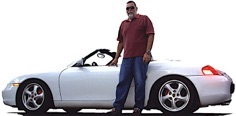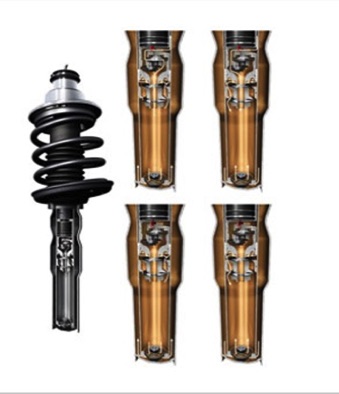

Published in the January 2013 issue of “Die Porsche Kassette”
A car’s suspension is the link between the road and the car. Its job is to reduce the vibrations from the wheel and the car body caused by the road surface and steering. The suspension encompasses many different parts such as strut support, bearings, springs, shock absorbers, connecting rods, stabilizers, axle and wheel supports, wheel bearings, suspension arms, brakes, rims, tires final drives and steering.
First, the springs connect the unsprung masses to the sprung mass of the vehicle. They cushion the effects of the road surface but left to themselves the car’s body would just bounce up and down every time we drive over an uneven surface. In order to reduce the “springiness” shocks are introduced to the equation.
Your car’s shocks, or more correctly, shock absorbers, limit excessive suspension movement but their main purpose is to dampen the suspension’s spring oscillations.
And then there are also struts. The difference between them is that shocks merely dampen motion, while struts also act as a piece of the suspension. Struts are generally heavier and stronger than shocks, but today the two words are almost interchangeable.
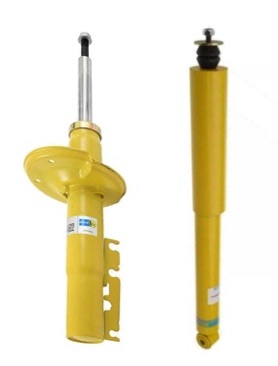
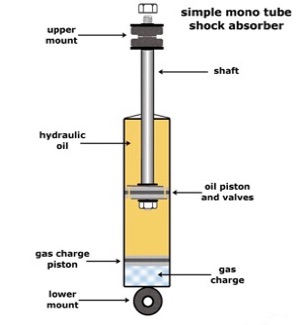
Shock absorbers are basically hollow tubes (cylinders) with pistons which use valving of oil and/or gases to absorb excess rebound energy from the springs.
Some also have pressurized gas to keep the oil under pressure which helps eliminate the “shock dissolve” caused by the oil overheating and changing its dampening characteristics.
When the suspension “BUMPS”, the piston moves down in the tube. This forces the hydraulic oil through the bump-valve. The smaller the diameter of the valve, the more the shock resists the bump. On a “REBOUND”, the piston moves up and hydraulic oil is forced through the rebound-valve.
These diagrams are an oversimplification of what is included in our Porsches. The struts and shocks in modern Porsches are true engineering marvels.
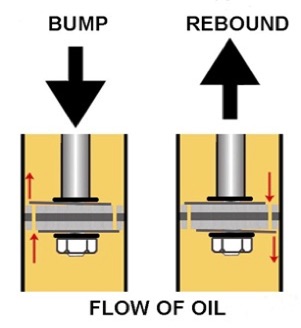
The Porsche Active Suspension Management (PASM) Option, for example, uses sensors which record the body movements that accompany powerful acceleration, braking or uneven road surfaces and actively and continuously regulates the damping force for each individual wheel according to road conditions and driving style.
The driver can select between two different modes: Normal and Sport.
In the Sport Mode, the suspension is set to a harder damping rate. If the road surface is uneven or rough, PASM automatically switches to a softer setting thereby improving contact between the tires and the road. When the road surface improves, it hardens the setting one more.
We always get the question: “When do I have to replace my shocks?”
My answer is when the oil leaks out of the tubes, then you replace them. A little seepage is normal for older shocks and struts, and that doesn’t indicate a need to replace, unless there are other symptoms, but if the entire unit is wet or dripping with oil, replacement is indicated.
If you notice excessive bouncing this is an indication that the shock is not damping the springs’ movements and is generally an indication of bad shocks.
But note that:
1.- Neither shocks nor struts will make a car lean. Leaning is generally caused by a broken spring or another suspension problem.
2.- Neither shocks nor struts cause vibration when driving at speed. Vibrations are caused by tires/rims that are not round or by out-of-balance rotating components.
3.- Scalloped tires are rarely caused by worn shocks or struts. Scalloped or chopped tires generally result from a bad wheel alignment or out-of-round tires/rims, but keep in mind that out of round tires or rims can damage the struts or shocks.
To learn more about Porsche Shocks, Struts and more, please visit my website at: www.PedrosGarage.com
Happy Porscheing,
Ⓒ2012 Technolab / PedrosGarage.com

